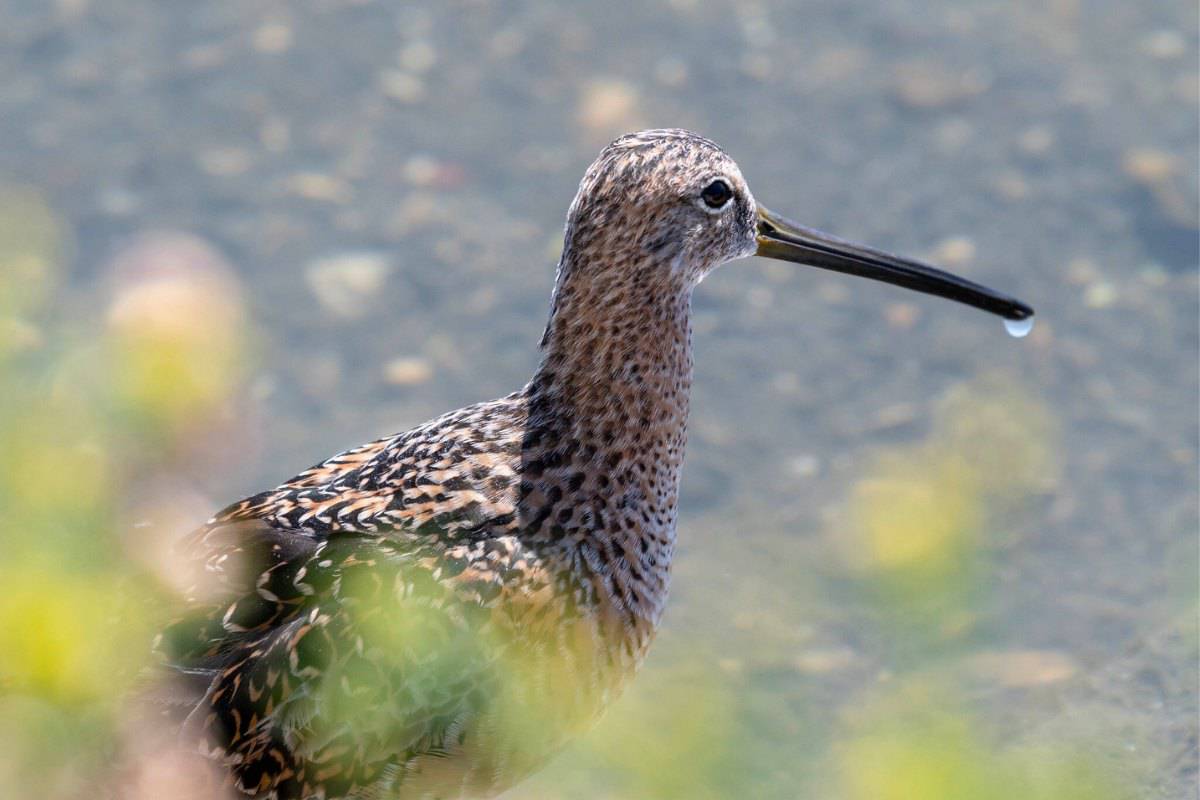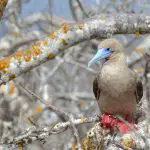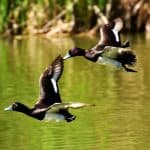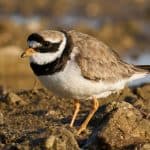Common Name: Long-billed Dowitcher
Scientific Name: (Limnodromus scolopaceus)| Size | Diet | Range in Hawaii | Status in Hawaii |
|---|---|---|---|
| 10 in. - 12 in. | crustaceans, mollusks, insects, and worms | Kaua'i, O'ahu, Moloka'i, Lana'i, Maui, Big Island | Least Concern |
The Long-billed Dowitcher, also known as Limnodromus scolopaceus, is a medium-sized shorebird species that is native to North America. While the species is not native to Hawaii, it is a regular winter visitor to the islands as a non-breeding visitor. With its unique appearance and distinctive foraging behavior, the Long-billed Dowitcher is a fascinating bird species that has captured the attention of birdwatchers and avian enthusiasts around the world.
In this article, we will explore the world of the Long-billed Dowitcher, its unique characteristics, and its regular presence in Hawaii.
Long-billed Dowitcher
Appearance
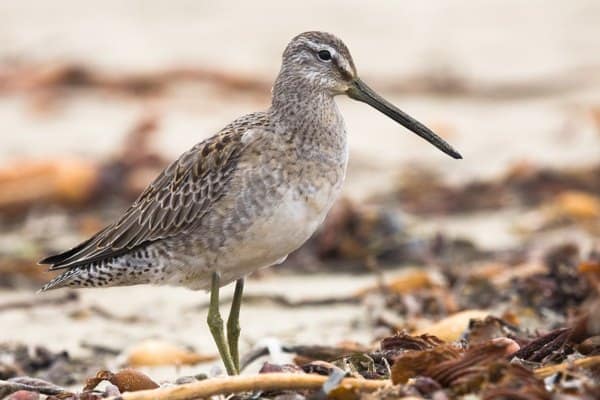
The Long-billed Dowitcher is a striking shorebird with a distinctive appearance. It measures approximately 10 to 12 inches (25 to 30 centimeters) in length. This bird is characterized by its long, slender bill, which gives it its name.
During the breeding season, it displays vibrant reddish-brown plumage with intricate black markings, while in the winter, its feathers become a more subdued grayish-brown. Its appearance is a testament to nature’s artistry, making it a captivating sight for bird enthusiasts.
Diet
These wading birds are known for their long bills, which they use to probe the mud and shallow water for food. Their diet consists of a smorgasbord of aquatic invertebrates, including tiny crustaceans, mollusks, insects, and worms. During their migratory journeys, they also feed on aquatic plants and seeds.
Nesting
These shorebirds choose their nesting grounds in the vast Arctic tundra regions of Siberia, Alaska, and northwest Canada. Their nests are meticulously concealed in the ground, often in the vicinity of freshwater wetlands or marshes.
What’s particularly fascinating is the construction of their nests. Long-billed Dowitchers make use of their surroundings, fashioning their nests from grasses, sedges, and other available vegetation. These nests are carefully woven into the environment to provide both camouflage and protection for their precious eggs.
Once the nesting site is prepared, they typically lay a clutch of four eggs, which are beautifully speckled with dark markings. The parents share incubation duties, with both the male and female taking turns keeping the eggs warm.
Behavior
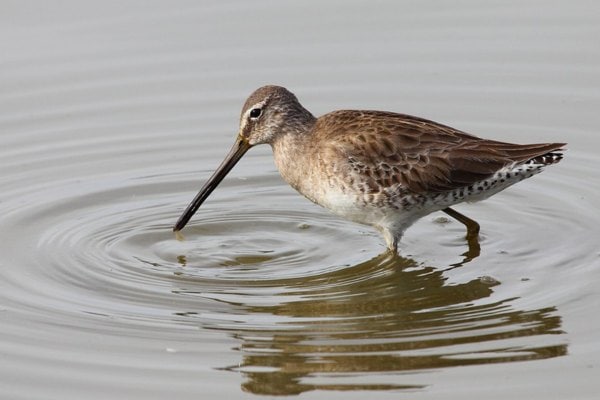
These shorebirds are renowned for their long bills, which they skillfully use to probe mud and shallow waters in search of food. They exhibit a distinctive “sewing machine” feeding behavior, rapidly bobbing their bills up and down as they pick out small invertebrates from the muck.
During their migratory journeys, Long-billed Dowitchers embark on incredible long-distance flights, covering thousands of miles between their Arctic breeding grounds and wintering areas in the Americas. Their annual migrations are a testament to their navigational abilities and endurance.
In addition to their feeding and migratory habits, Long-billed Dowitchers often display intricate courtship rituals during the breeding season. These rituals involve aerial displays, calls, and intricate movements to attract mates.
Habitat
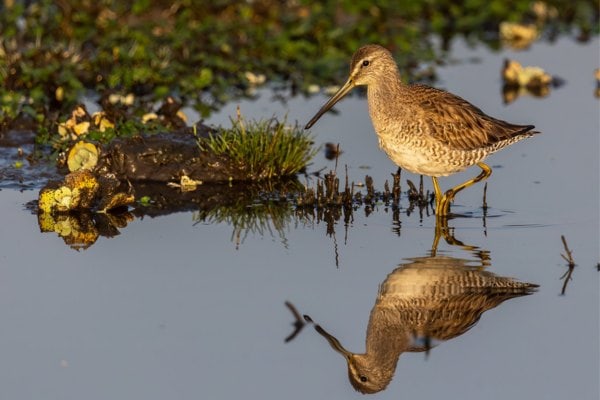
The Long-billed Dowitcher is a bird of diverse and picturesque habitats. During its breeding season, it seeks solace in the vast, pristine Arctic tundra regions of Siberia, Alaska, and northwest Canada. Here, it nests amidst the wild and untouched landscapes, concealed in the ground’s sheltering embrace.
In contrast, during the winter months and migration, these birds grace the shores of North America and Mexico, where they frequent a variety of wetland habitats. You can spot them in marshes, coastal estuaries, lagoons, and mudflats.
Range
The Long-billed Dowitcher is a regular winter visitor to Hawaii, primarily found in the Northwestern Hawaiian Islands, including Kure, Midway, Laysan, and French Frigate. These elegant migratory birds return year after year, with Laysan hosting significant numbers. Interestingly, over 98% of dowitcher sightings in Hawaii are of this species. They find Hawaii a cozy wintering spot and have even been known to over-summer on occasion.
Conservation Status
According to the IUCN Red List, the Long-billed Dowitcher (Limnodromus scolopaceus) is classified as “Least Concern.” This designation suggests that, as of the assessment date, the Long-billed Dowitcher’s population is relatively stable and not at a high risk of extinction.
Interesting Facts
1. Monotypic species
The Long-billed Dowitcher is classified as a monotypic species, meaning there are no recognized subspecies. This status emphasizes the uniqueness and distinct characteristics of this shorebird.
2. Vocal communicators
These birds are known for their distinct calls, often described as a “kek-kek-kek” sound. During courtship and territorial disputes, their vocalizations become more pronounced and are used for communication.
3. Hybridization with Short-billed dowitcher
Long-billed Dowitchers sometimes hybridize with the closely related Short-billed Dowitcher. This interbreeding can create individuals with mixed characteristics, adding an interesting aspect to their genetics.
4. Lack of historical records in Southeastern Hawaiian Islands
Interestingly, there were no historical accounts of dowitchers in the Southeastern Hawaiian Islands until relatively recent sightings. This suggests shifts in their wintering patterns or increased documentation.
5. Age-related plumage
Juvenile Long-billed Dowitchers often have a more mottled appearance compared to adults, which helps them blend in and avoid predators during their early stages of life.
Frequently Asked Questions
1. Are Long-billed Dowitchers good swimmers?
While they are primarily waders and foragers in shallow water, Long-billed Dowitchers are capable of swimming if necessary, especially when crossing small bodies of water during migration.
2. Why are they important for ecosystems?
Long-billed Dowitchers play a crucial role in maintaining the health of wetland ecosystems by controlling insect populations and contributing to nutrient cycling.
3. How long do Long-billed Dowitchers live in the wild?
Long-billed Dowitchers typically have a lifespan of around 5 to 7 years in the wild. However, some individuals can live longer, while others may have shorter lifespans due to various factors like predation and habitat conditions.
4. What is the significance of Long-billed Dowitchers in Native American cultures?
In some indigenous cultures in North America, Long-billed Dowitchers and other migratory birds are important symbols and are integrated into cultural practices and stories.
5. How can I get involved in Long-billed Dowitcher conservation efforts?
You can support conservation organizations and initiatives dedicated to protecting wetland habitats and migratory bird species like Long-billed Dowitchers. Volunteering, donating, or participating in citizen science projects are excellent ways to contribute.
